Satellite stories – 3. The North York Moors
A less well-known tourist area (and carbon store) in the UK
The North York Moors National Park (NYM) in Yorkshire, England, is a beautiful Place where it is said that time has stood still. The Park has broad undulating hills and dales (or vales), interspersed with Georgian farmhouses and pubs, quiet attractive villages (for example Thornton-le-Dale and Lealholm) and the historic town of Whitby (whence Captain James Cook sailed – for Australian and Aotearoa’n subscribers). The moors also store thousands of years-worth of peat beneath flowering heather (Figures 1 to 6).
The moors themselves, shown brown in Figure 5, become seas of purple flowers in late August and September. Shrubs growing on the upland moors (initially for grouse shooting) give them a darker colour in the satellite image. Between the moors, valleys (for example Rosedale) that were gouged out by glacial meltwater appear light green.
Figure 1. Thornton-le-Dale (in the Vale of Pickering)
Figure 2. Whitby

Figure 3. Lealholm (in the Esk valley)
The ‘green’ to the left of the photo, behind the trees, has a traditional quoits pitch (the quoits are metal and horseshoe-shaped). Games between villages in the dale are very competitive.
Figure 4. Heather moorland
Photo. Kate Phillips
Figure 5. Satellite view of the North York Moors
Source: NASA
The NYM cover approximately 1,430 sq. km. The park contains one of the largest expanses of carbon-rich moorland, much of it covered in heather, in England. The heather grows on blanket bogs as well as shallow peat and mineral gritstone soils.
In the wet and cold climate vegetation does not decompose easily. Sphagnum moss and grass build up organic matter over time, forming peat - partly decayed plant material. Heather, bilberries, and grasses then grow on the layers of peat. Much of this peat is shallow, less than 40cm deep. However, about 5,000 hectares of deep peat, up to 6m deep, have been storing carbon for thousands of years. However, some peatlands have been degraded and eroded due to artificial drainage for agriculture, and some have been damaged by fires.
A partnership of organisations is working to restore peat-building ecosystems in the NYM by re-wetting and re-vegetating land. As of March 2023, this partnership had restored 42,000 ha. of peat.
Figure 6. Rosedale
You might be able to see remnants of former iron smelters in the left distance. The former railway track that connected them is now a walkway around the valley.
Other photos – David Redfern
The NYM is a beautiful place – please don’t visit - save it for those of us who know.
A number of satellite images can be downloaded here.

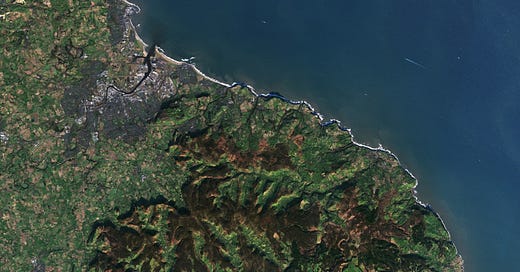


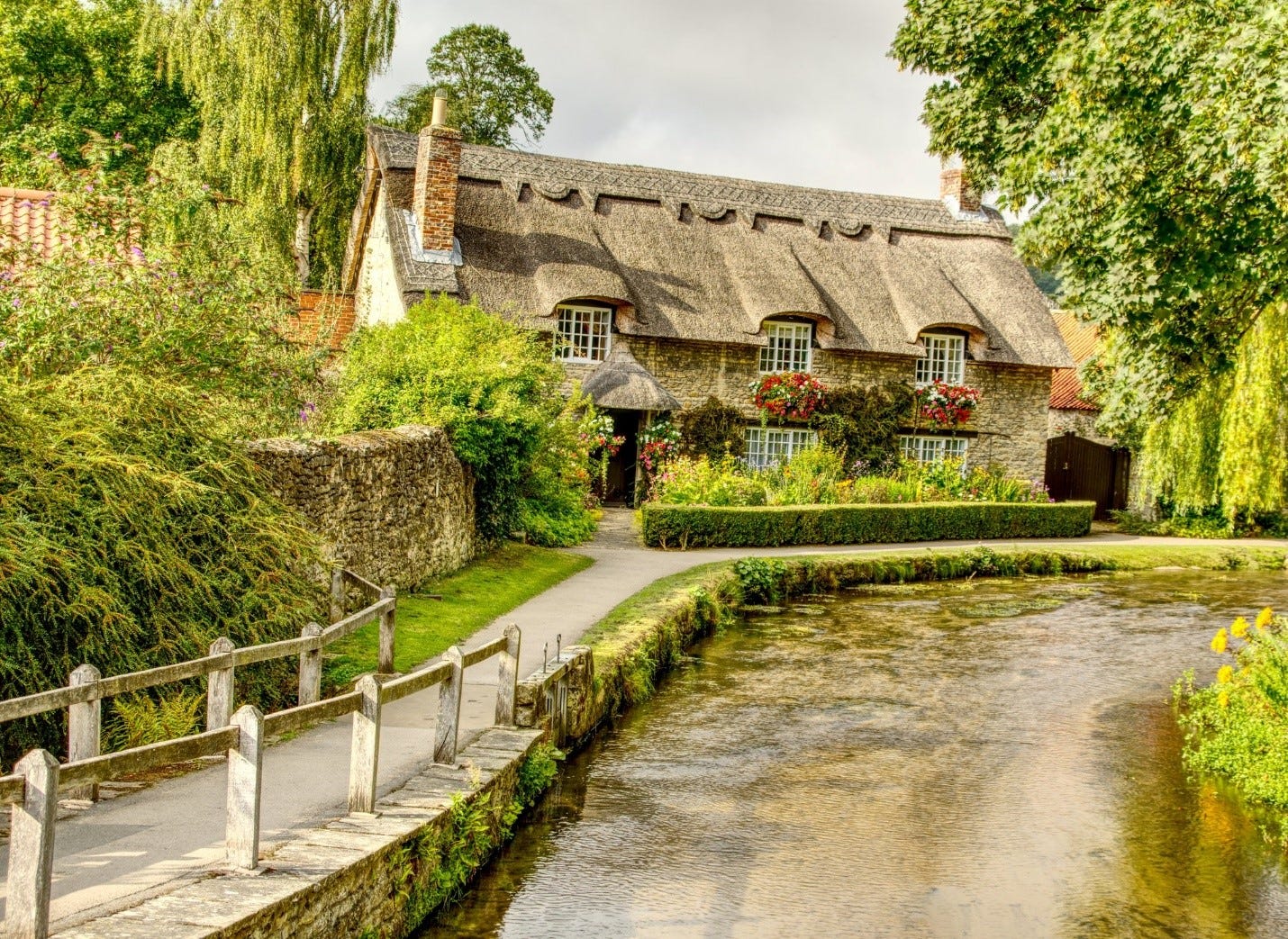

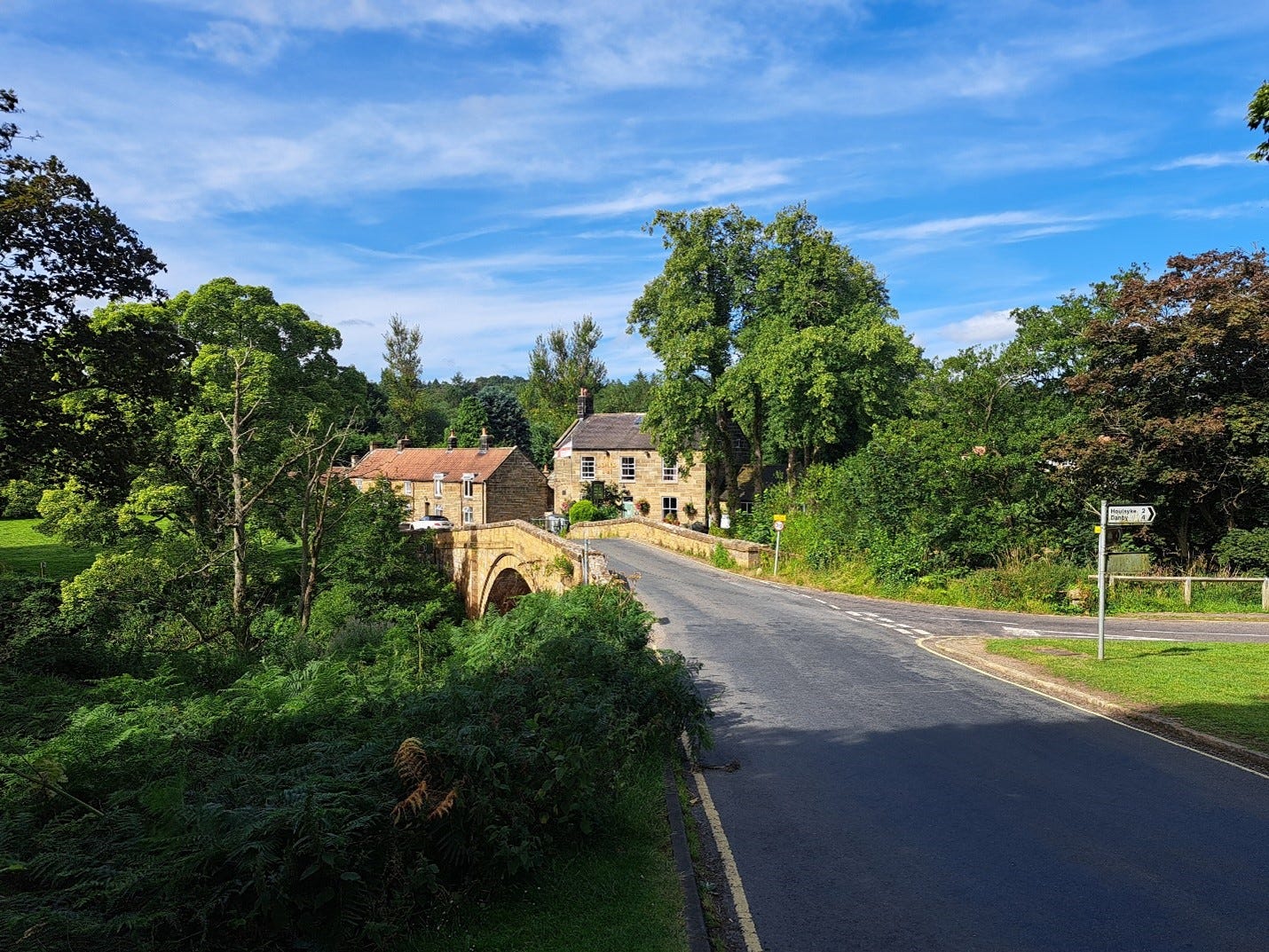
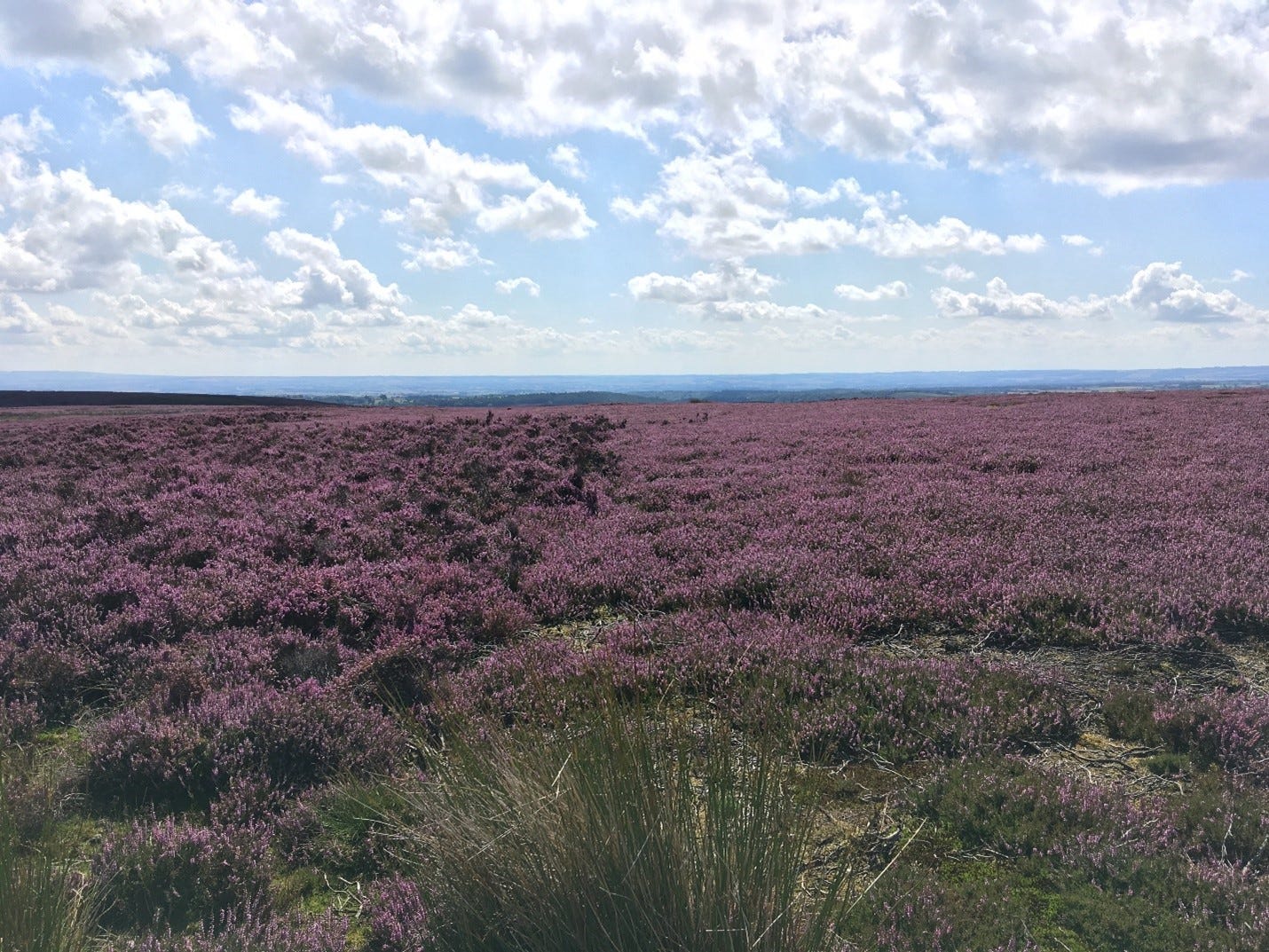
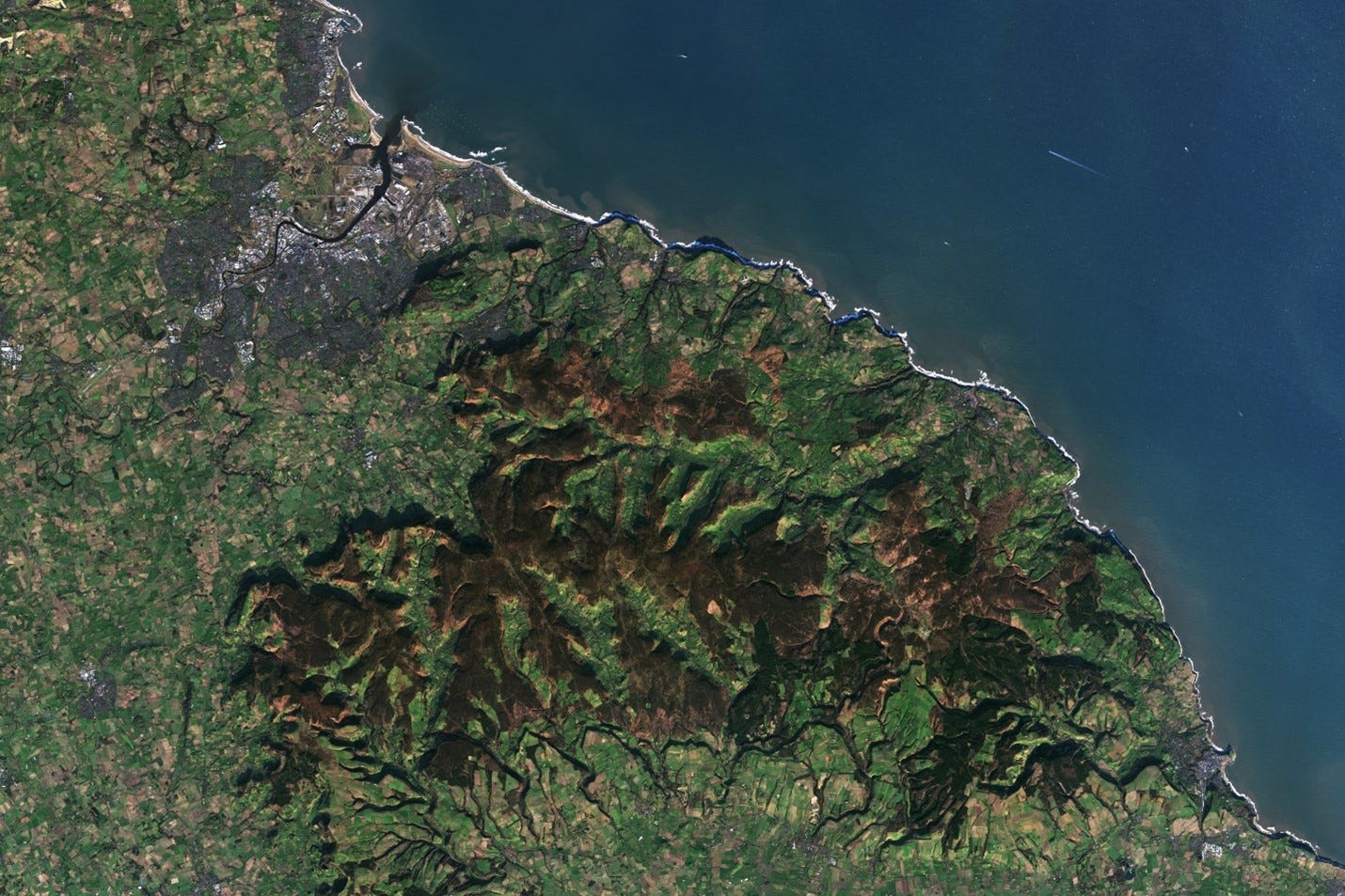
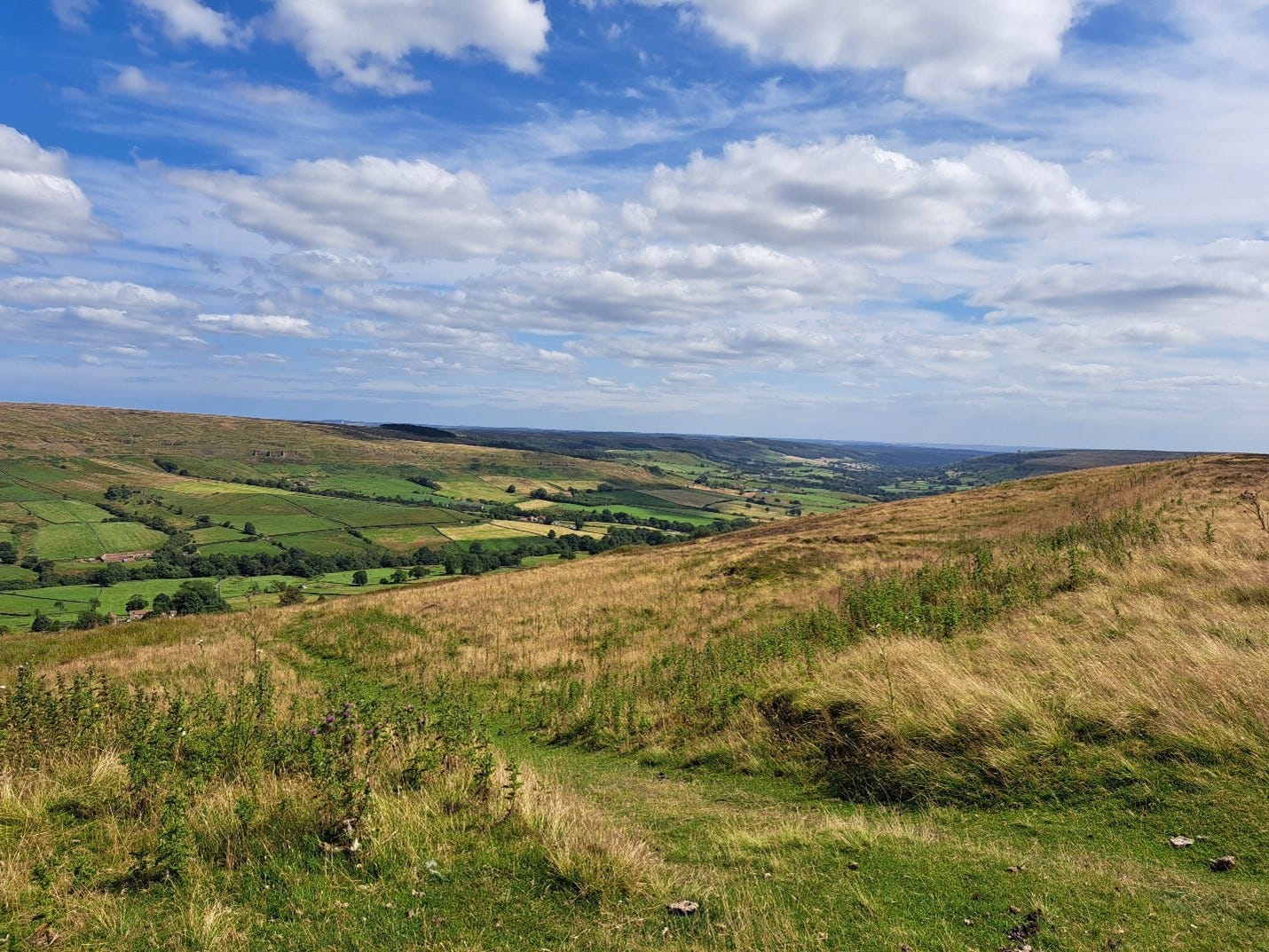
These moors are fascinating to me in part because (though I don't know if it applies to this particular example) many of them are anthropogenic and yet have unique conservation value - but I'd assume the "natural" moors are given special attention in that respect?